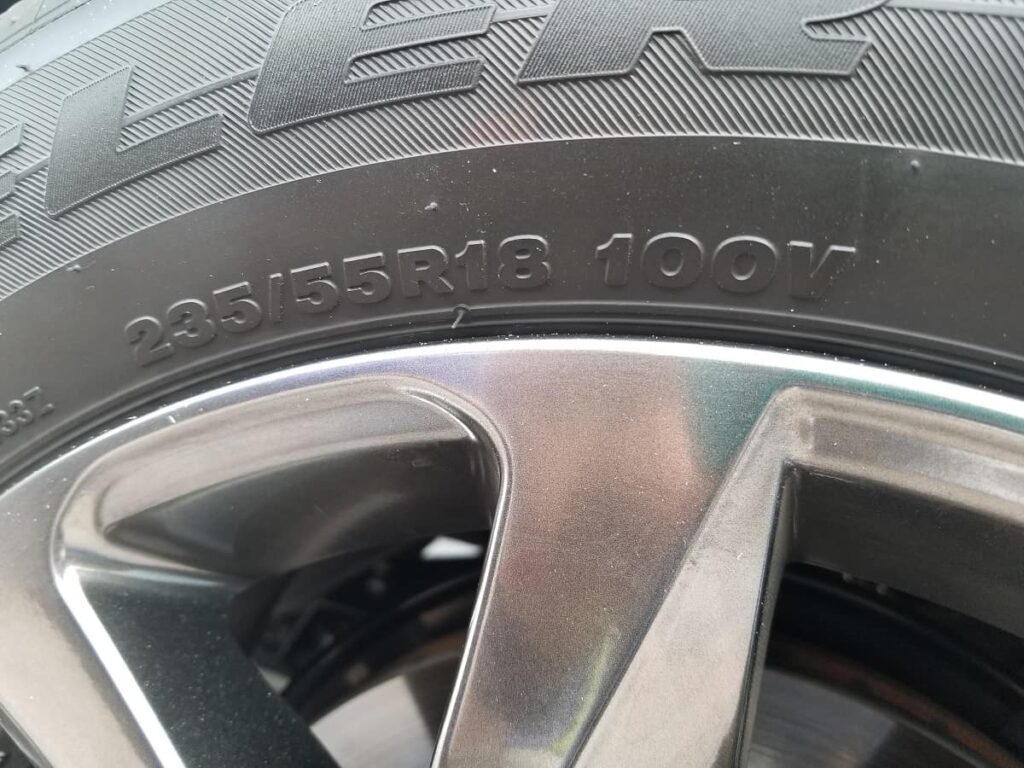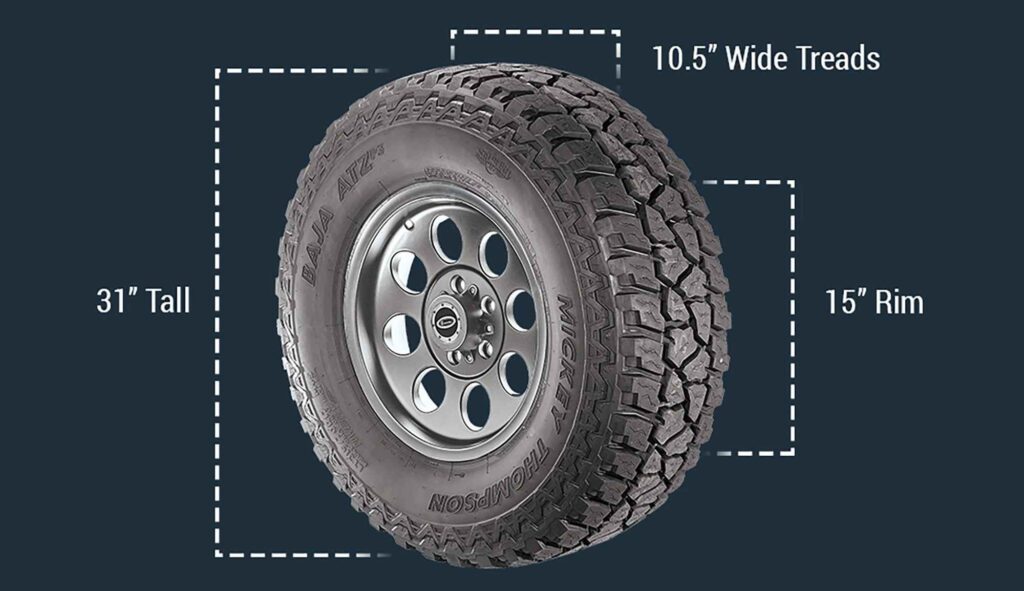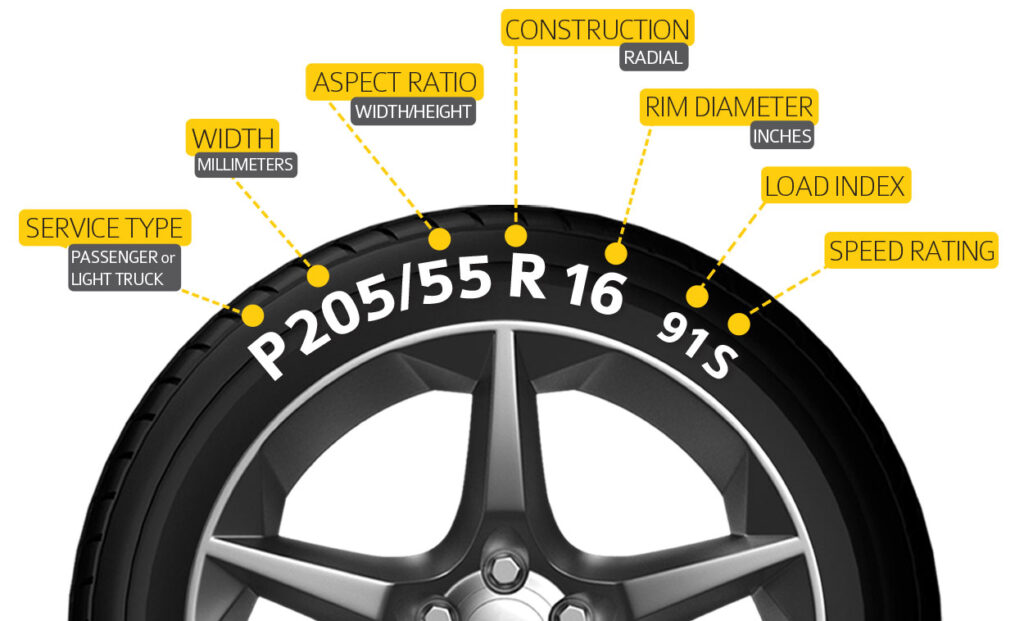Tire size is a critical aspect of your vehicle’s performance, safety, and overall driving experience. Understanding how to measure and choose the right tire size is essential for both regular maintenance and making informed decisions when buying new tires.
In this page, we’ll delve into the description, measurement methods, average sizes, and specific vehicle models with large or small tire sizes.

Description
Tire size refers to the combination of numbers and letters found on the sidewall of a tire. This alphanumeric code contains essential information about the tire’s dimensions, load capacity, speed rating, and other specifications. Properly sized and maintained tires are vital for ensuring safe and efficient driving.
Measurement
The tire size of a car is typically measured in inches. The diameter is measured in inches. The width is measured in inches. The aspect ratio is expressed as a percentage.
Measuring a tire’s size can be done by examining the numbers and letters on the sidewall. This code typically looks like this: P215/65R16. Here’s how to interpret and measure it:
- Tire Type (P): The first letter indicates the tire’s intended use. “P” stands for passenger car tires.
- Tire Width (215): The three-digit number represents the tire’s width in millimeters. In this example, the tire is 215 mm wide.
- Aspect Ratio (65): The two-digit number after the slash (/) is the tire’s aspect ratio. It represents the tire’s height as a percentage of its width. A ratio of 65 means the tire’s height is 65% of its width.
- Rim Diameter (16): The last number indicates the diameter of the wheel the tire is designed to fit, measured in inches.

Average Sizes
Tire sizes vary depending on the vehicle type, make, and model. Here are some average tire sizes based on common vehicle categories:
- Compact Cars: Compact car tires often range from 15 to 17 inches in diameter and have varying width and aspect ratios.
- Midsize Sedans: Midsize sedan tires usually fall within the 16 to 18-inch diameter range, offering a balance between comfort and performance.
- SUVs and Trucks: SUV and truck tires can range from 16 to 22 inches in diameter or even larger, designed to support heavier loads.
Popular Cars with Large Tire Sizes in the US
- Ford Mustang: Known for its powerful performance, the Ford Mustang often comes equipped with larger tire sizes for enhanced traction and handling.
- Chevrolet Camaro: The Chevrolet Camaro also boasts larger tire sizes to complement its sporty and high-performance design.
- Dodge Challenger: Dodge Challenger vehicles commonly feature larger tires, which contribute to its muscle car appearance and performance.
Popular Cars with Small Tire Sizes in the US
- Toyota Corolla: Compact sedans like the Toyota Corolla usually come with smaller tire sizes designed for efficient commuting.
- Honda Civic: The Honda Civic is another compact sedan with tires optimized for fuel efficiency, making it a popular choice for daily driving.
- Mazda3: Mazda3, known for its stylish design and agile handling, often features smaller tires suitable for city and suburban driving.

Choosing the right tire size is vital for ensuring your vehicle’s safety, performance, and overall driving experience. Whether you’re replacing your tires or considering a new vehicle purchase, understanding how to measure and interpret tire sizes is crucial.
The appropriate tire size can affect your vehicle’s handling, traction, and fuel efficiency, so it’s essential to make an informed decision based on your specific driving needs and preferences.